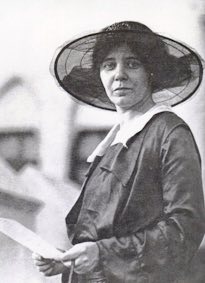While earning degrees in law and social work, Alice Paul studied in London and joined the radical British suffrage movement. She was jailed several times and returned in 1910 determined to put new life into the American woman’s struggle for the ballot.
The National American Women Suffrage Association (NAWSA), the old organization of Anthony and Stanton, was still focused on state-by-state campaigns, but Alice Paul preferred to lobby Congress for an amendment to the Constitution. She worked first within the NAWSA and then in her own rival organizations.
She soon demonstrated her political savvy, stealing the limelight at Woodrow Wilson’s inauguration with a gigantic suffrage parade. When Wilson proved slow to aid the suffrage cause, Alice Paul adopted the British strategy of holding the party in power responsible. Her group, then called the Congressional Union, campaigned against Democrats in the states where women already voted. Alice Paul led them in militant tactics, including picketing the White House.
After the First World War broke out, tensions grew and the pickets were alternately threatened by hostile crowds and thrown in jail. Placed in solitary confinement in a psychopathic ward, Alice Paul was force-fed, but her spirit remained unbroken.
In the 1920s her group, by then the National Woman’s Party, set the agenda for feminism: the vote won, the next target would be an Equal Rights Amendment.

